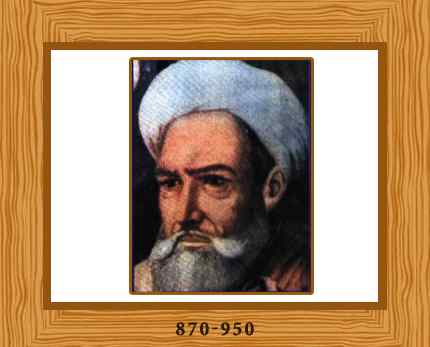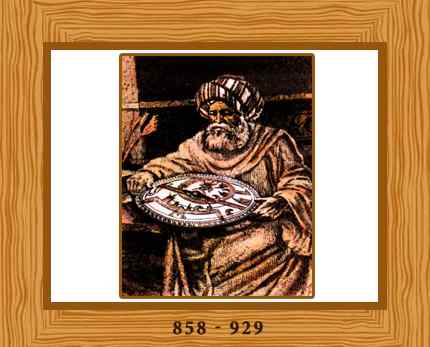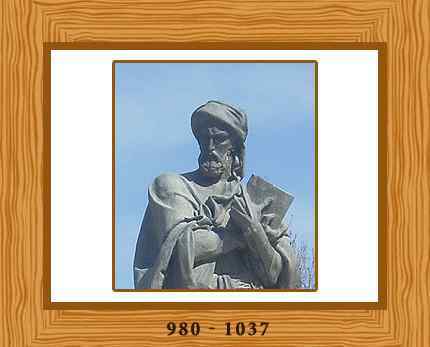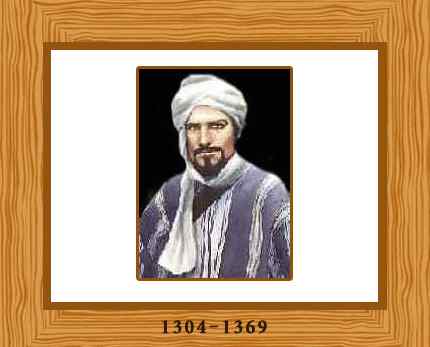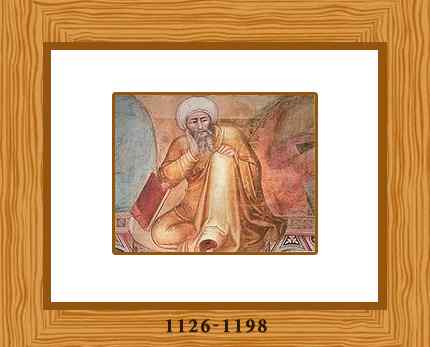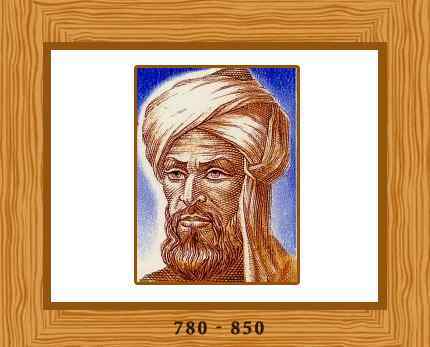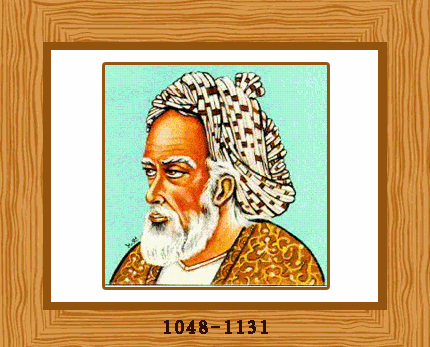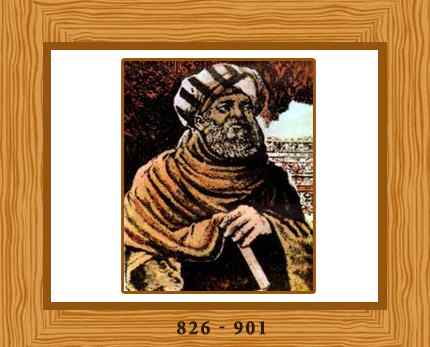This is the point from which I could never return, And if I back down now then forever I burn. This is the point from which I could never retreat, Cause If I turn back now there can never be peace. This is the point from which I will die and succeed, Living the struggle, I know I'm alive when I bleed. From now on it can never be the same as before, Cause the place I'm from doesn't exist anymore [Immortal Technique]
Saturday, January 31, 2015
Wish I Was Here
Starring: Zach Braff, Josh Gad, Ashley Greene, Kate Hudson, Joey King, Mandy Patinkin
Islam Struggles For Unity and Independence From The West

Since the Ottoman Empire’s collapse in the First World War, Arab Islamic civilization has been deep in a crisis that can only be resolved from within. Its character is both political and religious and might be compared with the Thirty Years’ War in Europe that ended in 1648 in the Westphalian Settlement, which created a new international system of national sovereignties and, in religion, acceptance of the Augsburg principle (1555) of cuius regio, eius religio. Roughly speaking, these terms have prevailed in the West to the present day, notwithstanding a sinister 20th-century totalitarian interlude.
The unexpected appearance of what claims to be the new Islamic Caliphate—sweeping all before it, its atrocities demonstrating its power and ruthlessness, its avowed destiny the restoration of an Islamic Golden Age—should not be seen as anything new in imperialist and post-imperialist history.
It is astonishing that the debate in Western circles on what (or what not) to do about ISIS has seemed largely innocent of history and indifferent to the pattern of consistent futility and failure in the West’s efforts to impose its will on the non-Western world.
A new movement that claims to restore the lost power and glories of Islam, is actually the ultimate stage in the crisis that has afflicted the Arab Muslim civilization since its loss of unity in the defeat of the Ottoman Empire, the last political manifestation of a united Islam.
One is constantly told that history must be consulted in order to understand the present, but in practice that rarely is done with an open mind.
The rise of a radical popular movement demanding that a lost golden age be restored to a fragmented and culturally distraught society occurred at least twice in 19th-century China (the Taiping and Boxer rebellions) and in colonial India (the so-called Sepoy Mutiny) and Sudan (with the Mahdi Mohamed Ahmed, to take only the best known instances of such uprisings against imperial powers.

The phenomenon has appeared in post-colonial Africa: what else is the terrible Lord’s Resistance Army of children in Uganda, or other radical movements such as Boko Haram, classified in Western capitals as merely “terrorist”? Their power lies in that they are motivated by versions or perversions of religion.
All are political expressions of probably the most important recurrent phenomenon of history itself: the search for the key to the Millennium, common to sophisticated as well as simple societies throughout history. What do people think Communism was, and in fragmented forms remains today? It proposed a method for engineering what Communists—the Comintern and the Soviet and other governments—promised, and indeed believed: the coming of the Great Day when virtue incarnate would manifest itself in a transformed future condition of permanent happiness conferring justice and happiness upon an afflicted people. It is secular religion.
This is a modern phenomenon. In the West during the medieval Age of Religion the promised paradise was held to exist outside of time and would only be opened at the end of the dolor of earthly existence by the arrival of the Messiah. The Millennium marked the end of secular time, when human history would have run its course and the “Thousand Years” of heavenly reign begun—as promised in the Book of Revelation.
Marxism was the secular translation of that religious promise, promulgated by the new prophets: Marx himself, Engels, Mao Tse-tung. A secularized prophecy was necessary because God had been assassinated in the European Enlightenment.
The contemporary crisis of the Arabs began following the Great War when the winners, the principal European imperial powers of the time, disposed of the remnants of the Ottoman Empire, using their new instrument, the League of Nations, to issue mandates of supervisory control over the new monarchies and other territorial authorities recognized in the war settlements. The quest nonetheless persisted to reunite the people of Islam, united by the Koran and by the Arabic language in which the Koran was written and still is read.
The Ottoman system that had replaced the great Arab Caliphates was destroyed in the 19th and early 20th century by resistance within the Slavic European parts of the empire and then by the collision of the Ottomans with modern, industrial Europe in the World War.
Following 1918, ageless, Islamic but non-Arab Egypt remained a monarchy, but under British “protection.” Persia, also non-Arab, another ancient independent monarchy, had fallen under an informal British ascendancy after the discovery there of oil to fuel the Royal Navy. Syria, Iraq, and Transjordan had Hashemite Arab monarchs bestowed upon them—Iraq to be ruled by Faisal, who had led the “Arab Revolt” with T.E. Lawrence as his British military counselor, and who was initially made king of Syria until displaced by the French colonial authorities.
Syria and Transjordan were made mandated states by the League of Nations, respectively under French and British control. Palestine—as everyone knows—was also placed under British Mandate but with no provision made for fulfilling Britain’s wartime promise to establish a Jewish National Home there (on condition, as the Balfour Declaration specified, that the rights of the existing non-Jewish communities of Palestine would be respected).
What at the time was tribal Arabia was in the course of being conquered by Ibn Saud, his conquered territories being proclaimed independent “Saudi Arabia” in 1932, while present-day Yemen remained under tribal rule.
The European colonial governments were accustomed to rule “lesser” peoples beyond Europe’s frontiers and beyond the seas in what they considered to be their subjects’ as well as their own best interests. Now they did so under the unimpeachable authority of the “international community,” as the League of Nations would be considered today, destroying the expectation the Arab peoples had of unity and genuine independence.
The new monarchies in Iraq and Syria fell to nationalist or military movements in the 1920s and 1930s. The modernizing and secular pan-Arab Baath party eventually took power in both countries. The closest thing to the pan-Arab ideal—an “Arab Nation”—was achieved after 1953 by Col. Gamal Abdel Nasser, who introduced “Arab Socialism” into Arab politics and achieved ephemeral unions of Egypt with Syria and Yemen.
Three decades after the Great War’s armistice, the newly created United Nations, a Western institution dominated (as still is the case) by the United States, partitioned British Mandated Palestine in order to establish the Jewish National Home promised in the British government’s Balfour Declaration of November 1917, thus creating a permanent conflict with the Palestinian possessors of the land. Since then there has been a constant struggle between American-backed Zionists and the existing Arab occupants of Palestine.
This has inflicted a politico-psychical transformation upon the general Arab consciousness, reanimating the sensibilities of the Crusades, the great Caliphates, and the Ottoman period when Muslims ruled Balkan Europe from Greece to Vienna.
On both sides, the Palestinian conflict has acquired the quality—to borrow the adjective contrived by Israeli politicians—of an “existential” struggle. Death to the loser.
In this political climate of Arab national failure and, as it seemed, irresolvable Israel-Palestinian conflict, the United States determined that it was capable of imposing a new order. This had been implicit in America’s overall wartime and postwar world policy.
There were two foreign-policy objectives to achieve in the Middle East:
The first was to assure American access to energy supplies. This had been done in a wartime agreement between Franklin Roosevelt and Arabia’s Ibn Saud, directly exchanging permanent access to Saudi oil for permanent U.S. protection.
The second was to find an Arab-Israeli solution. Had Washington been willing to impose one in the 1950s—the creation of two permanent states underwritten by the United States—the region would have been spared 60 years of war, open and covert. That was not done.
Israel was eventually confirmed in its impulse to possess all of the Holy Land, at whatever cost to the Palestinians, initially dismissed in Israeli propaganda discourse as an insignificant body of wandering tribesmen.
A permanent obstacle to American regional success arose in Iran in 1951, when a popularly elected populist prime minister, Mohammad Mossadegh, nationalized British oil interests against the will of the Shah. The Shah fled. But in 1953, a coup overthrowing the prime minister by street agitation, mustered by British and American intelligence agencies, restored the Shah. The Nixon administration later anointed him America’s ally and order-keeper in the Gulf region. However in 1979, after another period of internal disorder, he was forced to flee a Shia fundamentalist religious coup d’état, which included capture and internment of the U.S. Embassy staff and humiliation of the United States government. This produced the enmity towards Iran that has motivated American policy ever since.
The major result was Iraq’s subsequent attack on Iran, concerning territorial issues, which enjoyed unspoken American support. The war lasted eight years, and its savagery has been compared with that of the First World War. In 1990 Iraq invaded Kuwait—another territorial claim—and a U.S.-led coalition liberated Kuwait and its oil in the so-called Gulf War. The United States then resolved to keep permanent bases in Saudi Arabia, despite Saudi objection to the presence of such installations near the Muslim holy places.
After its 9/11 attacks on New York and Washington, the al-Qaeda movement, explicitly stated that its motive had been to impose God’s wrath upon the blasphemies of the United States in the Middle East. President George W. Bush reciprocated with his assertion that the jihadists of al-Qaeda embodied Evil.
The American invasions of Afghanistan and Arab Iraq were animated by revenge for the 9/11 attacks and rationalized by a fiction about nonexistent weapons of mass destruction in Iraq and by the self-serving American chimera of “democratizing” those two societies and eventually the rest of the region’s Arab and Central Asian Islamic states—assumed to be candidates for integration into a Washington-dominated liberal regional system.
The “New Middle East,” officially proclaimed by NATO at the end of 2003, has conspicuously failed to appear, but it remains a goal of the expansionist neoconservative visionaries among the makers of American policy.
In Bush’s government, Secretary of State Condoleezza Rice wrote in Foreign Affairs in 2008, “Democratic state-building is now an urgent component in our national interest” reflecting a “uniquely American realism” teaching that it is America’s job “to change the world,” and in its own image.
President Obama has declared that the jihadism of the new “Islamic State” is itself an incarnation of evil that must be deterred and destroyed.
The two sides in this renewal of George W. Bush’s War Against Global Terror—Jews and Christians in the West and their Arab enemies—both consider themselves “people of the Book” and descendants of the Prophet Abraham. They have now become in their own minds actors in the apocalyptic destiny described in the Book of Revelation.
Many American Evangelical Protestants have convinced themselves that contemporary American foreign policy can only be understood in such a context.
Obstacles to success in Washington’s renewal of war in the Middle East are that the American political model is no longer widely convincing or respected in the region; quite the opposite is true.
Moreover, Washington’s conduct since 2001 has undermined or deliberately subverted institutions of international order to which, in the past, the United States was a leading contributor.
The codes of international justice and morality, developed in the Western community of nations since the 17th century, have when expedient been disregarded or rejected, with demands that the United States be exempted from the jurisdiction of international law and even from what until recently were accepted norms of international morality concerning human rights and national sovereignty.
Thus the foreign policies of the United States have been stripped of a vital part of their assumed original moral content.
An assimilation of modern totalitarian influences, values, and practices occurred in the United States after 2001, with state assassinations, selective drone killings, disregard of due process, torture, and permanent incarceration without trial justified by American leaders in their conduct of what has amounted to a war, not really of religions, as such, but between absolutisms, the one religious, and the other, ours, a political culture of extreme and solipsistic millenarian nationalism.
One recalls the theory Samuel Huntington announced late in his career that the “next world war” would be a war of religions rather than states. The present writer dismissed this at the time as a simple projection into the future of 20th century experience and the conventional American foreign-policy thinking of the 1990s, notably that promoted by the aggressively anti-Islamic Washington neoconservatives.
The theory’s implausibility was augmented by its argument that China (regarded in Washington, then as seemingly even now, as a future enemy) was to be part of a “Confucian-Islamic military connection… to counter the military power of the West”—an alliance, if it were indeed to exist, one would think of no great use to China, a nation with a scattered and ill-treated Muslim minority of less than 3 percent of its population and little to gain from involving itself in Muslim conflicts with Washington.
The main effect of the Huntington thesis at the time it was promoted in the United States was to increase anti-Arab prejudices, especially among friends of Israel. It contributed to a climate among policymakers that made the Bush administration’s vengeance for the 9/11 attacks seem an inevitability.
It had an even more significant influence in Islamic intellectual and ideological circles and among Arab governments because of its Harvard provenance, the eminence of Professor Huntington himself, considered the dean of the American academic specialty of political science (which emerged in the 1930s out of the behaviorist movement) and for years a leading academic influence on Washington policy-making. Was he proposing a Western attack against the Muslim world?
While Chinese-Arab military alliance seems hardly a threat today, the Huntington thesis of a new religious war has been taken seriously in some quarters since the 9/11 attacks.
In 2014, within days of the proclamation of the new Islamic State, the new Caliphate, the drumbeat demand had begun in congressional and think-tank Washington for an attack upon ISIS (or ISIL, or the new Arab Caliphate, or in Arabic DAESH, as it is variously known), together with criticism of Barack Obama for his initial reluctance to act.
But why? The previous interventions in the Middle East have proven futile and damaging to both sides.
Americans have attempted to make themselves oligarchs of the modern Arab Islamic world, introducing invasions and wars whose actual effect has been to envenom an immense part of the Arabs of the Middle East and validate the vengeance they and their leaders have sought to inflict on us.
This is a war essentially within Islamic civilization, with religious, ideological, and political causes sprung from inside that society, as well as from the external provocations it has endured.
It can only be settled by the people of that civilization. Another foreign military intervention is the last thing it needs.
The first of the post-1918 imperial interventions by Britain and France shattered Islamic unity as it had existed in the late Ottoman period when the Sublime Porte was a major European as well as Mediterranean power. The major nations parceled the region up until after the Second World War, when successive Arab efforts to recreate the visionary ideal of the Arab Nation were thwarted.
The American attempt to make the Shah of Iran its plenipotentiary and his state the agent of American power in the Middle East ended in provoking a fundamentalist Iran that became the most important American enemy in the region.
The American invasions of Taliban-ruled Afghanistan and Sunni-ruled Iraq turned both into ruined and corrupt puppet regimes.
One might think any new American strategy to reform the Middle East would universally be regarded as folly, even in Washington.
What the previous attempts accomplished was destruction and the generation of seething hatred of the United States in much of the Islamic world.
Washington has now appointed itself leader of still another and predictably unsuccessful military intervention, in which tens or hundreds of thousands, perhaps millions, if this continues, may eventually die.
By joining the United States in a coalition to battle the New Caliphate, Saudi Arabia and the rest of its Arab members have once again announced their dependence upon a foreign and interventionist power to defend their own integrity, an admission of impotence to restore to the Arab Islamic world the wholeness and integrity it possessed during the Ottoman period, a confirmation of their capitulation to partition and imperialism in the 20th century, as well as their unwillingness or inability to restore the unity of the past Islamic civilization.
Friday, January 30, 2015
Thursday, January 29, 2015
The US "Peace Plan" For Syria
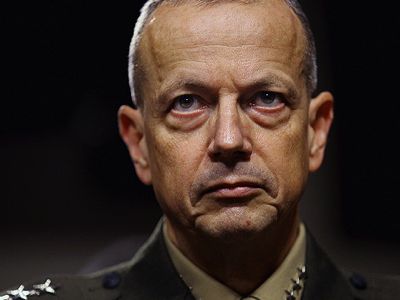
Former commander of NATO forces in Afghanistan, General John R. Allen conspired with General David Petraeus to sabotage the Syria peace plan at the Geneva 1 Conference. President Barack Obama had him placed under surveillance and managed to prevent his appointment as head of NATO. However, he managed to stay in office despite the charges against him (while Petraeus was forced to resign from the leadership of the CIA). Become commander of the anti-Daesh Military Coalition, he supports the shenanigans that General Petraeus leads from the Kohlberg Kravis Roberts Global Institute. He is director of the Center for a New American Security (CNAS), the think tank of "liberal hawks".
When, in 2001, President George W. Bush decided to place Syria on his list of targets to destroy, he had three objectives:
Several months ago, I explained that the Daesh project corresponds with the new US map of the division of the Middle East, published by Robin Wright in The New York Times in 2013 [1]. In continuation of the Sykes-Picot, the US plan aimed to further drastically reduce Syria. Also, when the US - after having waited for Daesh to complete the ethnic cleansing in Iraq for which they had been created - began bombing the jihadists, the question arose as to whether the liberated areas of Daesh would or would not be returned to Baghdad and to Damascus.
As the United States has refused to coordinate its military action against Daesh with Syria, and in view of the fact that Russia is preparing a peace conference, "liberal hawks" in Washington have set new goals.
The "peace" plan of the "liberal hawks" consists therefore in achieving the original goals by dividing Syria in two: an area governed by Damascus and another by "moderate rebels" (read: the Pentagon). The Republic is to have the capital and the Mediterranean coast; the Pentagon: the Syrian desert and gas reserves (that is to say the Daesh zone liberated by the bomber raids of General John Allen). According to their own records, "liberal hawks" would leave only 30% of the territory to the Syrian People!
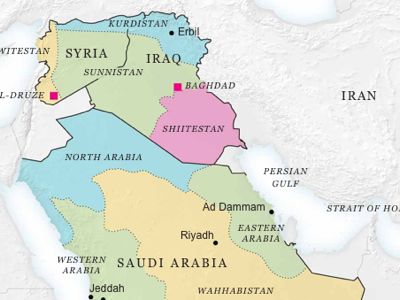
- Remodelling map according Robin Wright
The principle is simple: at present, the Republic controls all major cities except Rakka and a small part of Aleppo, but no one can claim to control a vast desert, neither the government nor the jihadists. So the Pentagon suggests that what is not clearly governed by Damascus rightfully belongs to its mercenaries!
Wednesday, January 28, 2015
15 Famous Muslim Scientists and Their Inventions
Abu Nasr Al-Farabi (872 – 950)
Also known as Alpharabius. Arab scientist and philosopher, considered as one of the preeminent thinkers of medieval era.
Al-Battani (858 – 929)
Also known as Albatenius. Arab mathematician, scientists and astronomer who improved existing values for the length of the year and of the seasons.
Ibn Sina (980 – 1037)
Also known as Avicenna. Persian philosopher and scientist known for his contributions to Aristotelian philosophy and medicine.
Ibn Battuta (1304 – 1369)
Also known as Shams ad–Din. Arab traveler and scholar who wrote one of the most famous travel books in history, the Rihlah.
Ibn Rushd (1126 – 1198)
Also known as Averroes. Arab philosopher and scholar who produced a series of summaries and commentaries on most of Aristotle’s works and on Plato’s Republic.
Muhammad ibn Musa Al-Khwarizmi (780 – 850)
Also known as Algoritmi or Algaurizin. His works introduced Hindu-Arabic numerals and the concepts of algebra into European mathematics.
Omar Khayyam (1048 – 1131)
Persian mathematician, astronomer, and poet, known for his scientific achievements and Rubaiyat (“quatrains”).
Thabit ibn Qurra (826 – 901)
Also known as Thebit. Arab mathematician, physician and astronomer; who was the first reformer of the Ptolemaic system and the founder of statics.
Abu Bakr Al-Razi (865 – 925)
Also known as Rhazes. Persian alchemist and philosopher, who was one of the greatest physicians in history.
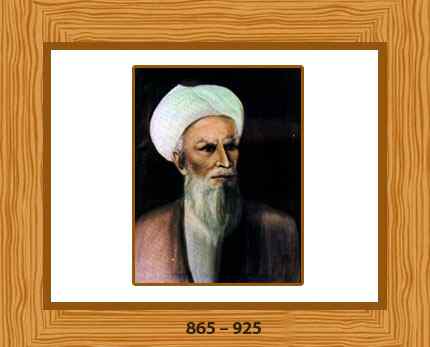
Jabir Ibn Haiyan (722 – 804)
Also known as Geber. The father of Arab chemistry known for his highly influential works on alchemy and metallurgy.
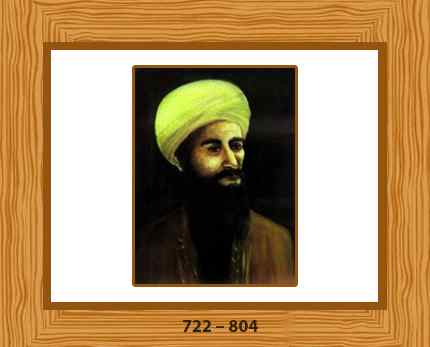
Ibn Ishaq Al-Kindi (801 – 873)
Also known as Alkindus. Arab philosopher and scientist, who is known as the first of the Muslim peripatetic philosophers.
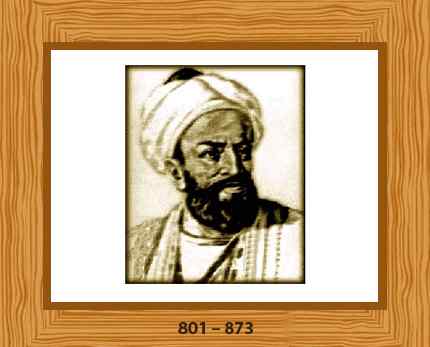
Ibn Al-Haytham (965 – 1040)
Also known as Alhazen. Arab astronomer and mathematician known for his important contributions to the principles of optics and the use of scientific experiments.
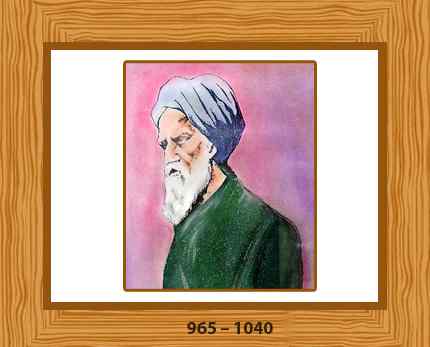
Ibn Zuhr (1091 – 1161)
Also known as Avenzoar. Arab physician and surgeon, known for his influential book Al-Taisir Fil-Mudawat Wal-Tadbeer (Book of Simplification Concerning Therapeutics and Diet).
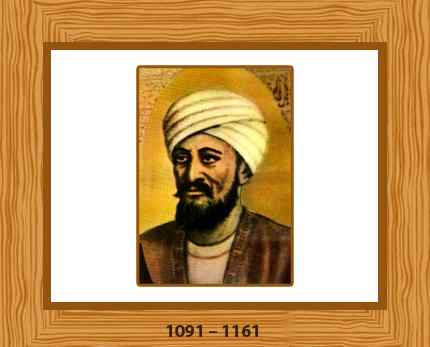
Ibn Khaldun (1332 – 1406)
Arab historiographer and historian who developed one of the earliest nonreligious philosophies of history. Often considered as one of the forerunners of modern historiography, sociology and economics.
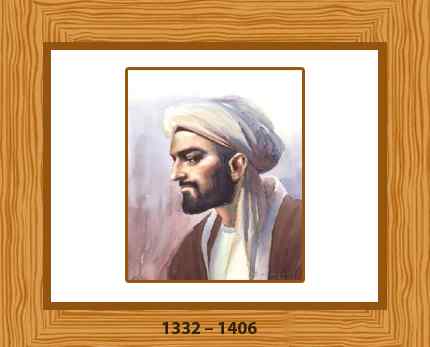
Ibn Al-Baitar (1197 – 1248)
Arab scientist, botanist and physician who systematically recorded the discoveries made by Islamic physicians in the Middle Ages.
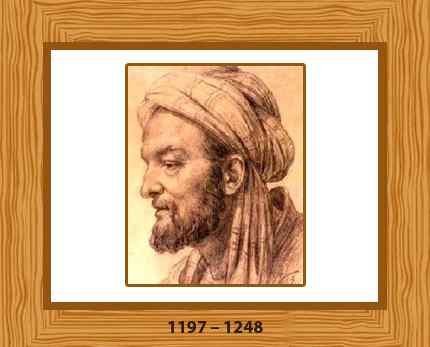
Source: Famous Scientists
Tuesday, January 27, 2015
Muslim Inventions That Shaped The Modern World

In 9th century Spain, Muslim inventor Abbas ibn Firnas designed a flying machine -- hundreds of years before da Vinci drew plans of his own.
1. Surgery
Around the year 1,000, the celebrated doctor Al Zahrawi published a 1,500 page illustrated encyclopedia of surgery that was used in Europe as a medical reference for the next 500 years. Among his many inventions, Zahrawi discovered the use of dissolving cat gut to stitch wounds -- beforehand a second surgery had to be performed to remove sutures. He also reportedly performed the first caesarean operation and created the first pair of forceps.
2. Coffee
Now the Western world's drink du jour, coffee was first brewed in Yemen around the 9th century. In its earliest days, coffee helped Sufis stay up during late nights of devotion. Later brought to Cairo by a group of students, the coffee buzz soon caught on around the empire. By the 13th century it reached Turkey, but not until the 16th century did the beans start boiling in Europe, brought to Italy by a Venetian trader.
3. Flying Machine
"Abbas ibn Firnas was the first person to make a real attempt to construct a flying machine and fly," said Hassani. In the 9th century he designed a winged apparatus, roughly resembling a bird costume. In his most famous trial near Cordoba in Spain, Firnas flew upward for a few moments, before falling to the ground and partially breaking his back. His designs would undoubtedly have been an inspiration for famed Italian artist and inventor Leonardo da Vinci's hundreds of years later, said Hassani.
4. University
In 859 a young princess named Fatima al-Firhi founded the first degree-granting university in Fez, Morocco. Her sister Miriam founded an adjacent mosque and together the complex became the al-Qarawiyyin Mosque and University. Still operating almost 1,200 years later, Hassani says he hopes the center will remind people that learning is at the core of the Islamic tradition and that the story of the al-Firhi sisters will inspire young Muslim women around the world today.
5. Algebra
The word algebra comes from the title of a Persian mathematician's famous 9th century treatise "Kitab al-Jabr Wa l-Mugabala" which translates roughly as "The Book of Reasoning and Balancing." Built on the roots of Greek and Hindu systems, the new algebraic order was a unifying system for rational numbers, irrational numbers and geometrical magnitudes. The same mathematician, Al-Khwarizmi, was also the first to introduce the concept of raising a number to a power.
6. Optics
"Many of the most important advances in the study of optics come from the Muslim world," says Hassani. Around the year 1000 Ibn al-Haitham proved that humans see objects by light reflecting off of them and entering the eye, dismissing Euclid and Ptolemy's theories that light was emitted from the eye itself. This great Muslim physicist also discovered the camera obscura phenomenon, which explains how the eye sees images upright due to the connection between the optic nerve and the brain.
7. Music
Muslim musicians have had a profound impact on Europe, dating back to Charlemagne tried to compete with the music of Baghdad and Cordoba, according to Hassani. Among many instruments that arrived in Europe through the Middle East are the lute and the rahab, an ancestor of the violin. Modern musical scales are also said to derive from the Arabic alphabet.
8. Toothbrush
According to Hassani, the Prophet Mohammed popularized the use of the first toothbrush in around 600. Using a twig from the Meswak tree, he cleaned his teeth and freshened his breath. Substances similar to Meswak are used in modern toothpaste.
9. The Crank
Many of the basics of modern automatics were first put to use in the Muslim world, including the revolutionary crank-connecting rod system. By converting rotary motion to linear motion, the crank enables the lifting of heavy objects with relative ease. This technology, discovered by Al-Jazari in the 12th century, exploded across the globe, leading to everything from the bicycle to the internal combustion engine.
10. Hospitals
"Hospitals as we know them today, with wards and teaching centers, come from 9th century Egypt," explained Hassani. The first such medical center was the Ahmad ibn Tulun Hospital, founded in 872 in Cairo. Tulun hospital provided free care for anyone who needed it -- a policy based on the Muslim tradition of caring for all who are sick. From Cairo, such hospitals spread around the Muslim world.
1. The Numeral System
Many Westerners, Germans in particular, are proud of their feats of technology and engineering. But where would engineers be without numbers? The numeral system of 1 to 9 which we use today dates back to the “House of Wisdom” in Baghdad. It is thought that our numeral system was invented there in the ninth century AD.
The numerals became known to Europe in the twelfth century, when British Arabist Robert of Chester translated the writings of Arab scholar Al-Khwarizmi. Al-Khwarizmi, for whom algorithms are named, is known as the developer of modern algebra -- yet another invention from the Muslim world.
2. The Guitar
The guitar, as we know it today, has its origins in the Arabic oud – a lute with a bent neck. During the Middle Ages, it found its way to Muslim Spain, where it was referred to as “qitara” in the Arabic of Andalusia.
It is said that a music teacher brought one to the court of the Umayyad ruler Abdel Rahman II in the ninth century. The modern guitar developed as a result of many influences, but the Arabic lute was its most important predecessor.
3. Magnifying Glass/Glasses
Not only did the Arab world revolutionize mathematics – it also revolutionized optics. The scholar Alhazen (Abu al-Hasan) from Basra was the first person to describe how the eye works.
He carried out experiments with reflective materials and proved that the eye does not sense the environment with “sight rays,” as scientists had believed up until then. He also discovered that curved glass surfaces can be used for magnification.
His glass “reading stones” were the first magnifying glasses. It was from these that glasses were later developed. Furthermore, Alhazen wrote important scholarly texts on astronomy and meteorology.
- Bridge Mill: The bridge mill was a unique type of watermill that was built as part of the superstructure of a bridge. The earliest record of a bridge mill is from Córdoba, Spain in the 12th century.
- Vertical-Axle windmill: A small wind wheel operating an organ is described as early as the 1st century AD by Hero of Alexandria. The first vertical-axle windmills were eventually built in Sistan, Persia as described by Muslim geographers. These windmills had long verticaldriveshafts with rectangle shaped blades. They may have been constructed as early as the time of the second Rashidun caliph Umar (634-644 AD), though some argue that this account may have been a 10th-century amendment. Made of six to twelve sails covered in reed matting or cloth material, these windmills were used to grind corn and draw up water, and used in the gristmilling and sugarcane industries. Horizontal axle windmills of the type generally used today, however, were developed in Northwestern Europe in the 1180s.
Early Torpedoes: Syrian Al-Hassan er-Rammah's manuscript "The Book of Fighting on Horseback and With War Engines"(1280) includes the first known design for a rocket driven torpedo.
Lute: while pre-Islamic Arabs had similar instruments, the Lute is thought to have been invented in the 11th century, and spread from Iraq to other areas under Muslim provinces
Source: Wikipedia
Cutting edge! Countless surgical instruments in a modern medical theater were brought to us by Al Zahrawi (Father of Modern Surgery). Thanks to his monkey nibbling on his lute string, the Muslim doc discovered that catgut used for internal stitches would dissolve naturally and could also make medicine capsules.

Renowned for stunning calligraphy, it should come as no surprise that the fountain pen was developed in in the Arab world. The demanding Sultan of Egypt Al-Mu'izz li-Din Allah insisted that his minions create a pen that wouldn’t cause ink stains. And the fountain pen was born, making your handwriting look more beautiful since 953 AD.

Ahh pay day - well known instigators of reckless spending, we have the ancient Arabs to thank for our monthly cheques. The first recorded instance of a written pledge for goods instead of cash comes from the Arabic saqq. Although somewhat obsolete in the world of PIN codes, their legacy will remain.

Since cleanliness is a central part of the Quran, it should come as no surprise that soap originates from the region. Keeping greasy hair and smelly pits at bay for centuries, Muslim brainboxes as early as 2800 B.C. were working up a lather in Babylon. Perhaps the most useful invention of all time, wouldn't you say?

With scorching temperatures and a plethora of desert creepy crawlies, it’s no wonder that the Arabs devised the first vaccinations. Muslim Indians brewed a successful vaccination for smallpox as early as 1000 BC but it wasn’t until the wife of the British ambassador in Turkey began exporting it to Europe in 1724 that it went viral.

Although the Chinese are credited with inventing saltpetre gunpowder, the Arabs figured out that the saltpetre gunpowder can be purified using potassium nitrate. In the 15th century, Arabs invented a rocket which they called a “self-moving and combustion egg”, and they called the torpedo a “self-propelled pear-shaped bomb”.

Islamic architecture is known to be the first style of architecture to adopt pointed arches. Europe’s gothic architecture later borrowed this characteristics for their cathedrals. The Middle East itself has moved out of its gothic teenage phase and, as shown by the Gulf, is now into opulent buildings like the Burj Al Khalifa in Dubai.

As the world goes camera crazy and snaps up selfies, let’s remember who we should thank for Kodak moments! Ibn al-Haytham, the “father of optics,” was the first person to realise that light enters through the eye and with this knowledge, he crafted the first pinhole camera. The world has been anything but camera-shy since.

Source: Al-Bawaba
Monday, January 26, 2015
What Is Islamic Democracy?
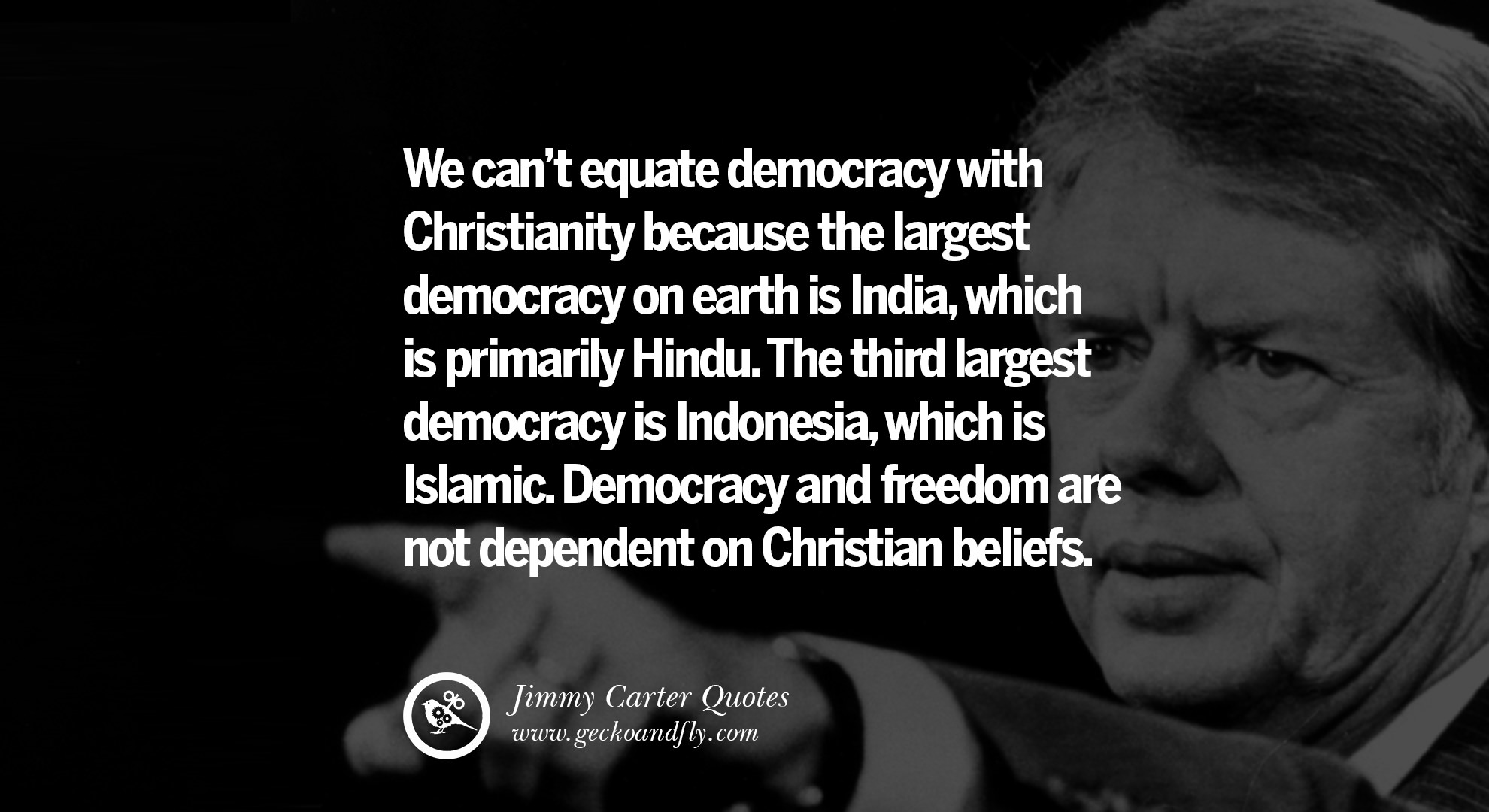
Islamic Democracy refers to a political ideology that seeks to apply Islamic principles to public policy within a democratic framework. In practice, there are three kinds of political systems in the Muslim-majority countries today; the basis of the distinction between them has to do with how comprehensively Islam is incorporated into the affairs of the state:
- Secular democracies, in secular states such as Azerbaijan and Turkey, that do not recognize any religion as its state religion and, therefore, does not incorporate religious principles into its public policy and other state affairs.
- Religious democracies; that recognize Islam as its state religion and a source of legislation, such as Malaysia and Maldives. The application of religious principles into public policy varies from country to country, since Islam is not the only source of law, such as Pakistan.
- Theocracies; that endeavor to institute Sharia, in full force,[1] and offers more comprehensive inclusion of Islam into the affairs of the state. Presently, Iran is the only example of an Islamic state in the form of Islamic republics.
The concepts of liberalism and democratic participation were already present in the medieval Islamic world. The Rashidun Caliphate is perceived by its proponents as an early example of a democratic state.
The key features of Islamic governance that I have found in Islamic sources – Quran and the Prophetic precedence (Sunnah), and contemporary Muslim discussions on the Islamic State – are Constitution,Consent, and Consultation. Muslims who seek to implement the Shariah are obliged to emulate the Prophet’s precedence and, given the rather narrow definitions of Shariah and Sunnah that most Islamist operate with, there is no escape for them from the three key principles identified here. While these principles need to be explored and articulated in the specific socio-cultural context of different Muslim societies, it is important to understand that they are essential.
Constitution
The compact, or constitution, of Medina that Prophet Muhammad adopted provides a very important occasion for the development of Islamic political theory. After Prophet Muhammad migrated from Mecca to Medina in 622 CE, he established the first Islamic state. For ten years, Prophet Muhammad was not only the leader of the emerging Muslim community in Arabia, but also the political head of the state of Medina. As the leader of Medina, Prophet Muhammad exercised jurisdiction over Muslims as well as non-Muslims. The legitimacy of his sovereignty over Medina was based on his status as the Prophet of Islam, as well as on the basis of the compact of Medina.
As Prophet of God, he had sovereignty over all Muslims by divine decree. But Muhammad did not rule over the non-Muslims of Medina because he was the messenger of Allah. He ruled over them by virtue of the compact that was signed by the Muhajirun (Muslim immigrants from Mecca), the Ansar (indigenous Muslims of Medina), and the Yahud (several Jewish tribes that lived in and around Medina). It is interesting to note that Jews were constitutional partners in the making of the first Islamic state.
The compact of Medina can be read as both a social contract and a constitution. A social contract, a model developed by English philosophers Thomas Hobbes and John Locke, is an imaginary agreement between people in the state of nature that leads to the establishment of a community or a State. In the state of nature people are free and are not obliged to follow any rules or laws. They are essentially sovereign individuals. However, through the social contract they surrender their individual sovereignty to a collective one and create a community or a State.
The second idea that the compact of Medina manifests is that of a constitution. In many ways, the constitution is the document that enshrines the conditions of the social contract upon which any society is founded. The compact of Medina clearly served a constitutional function, since it was the constitutive document for the first Islamic state. Thus, we can argue that the compact of Medina serves the dual function of a social contract and a constitution. Clearly the compact of Medina by itself cannot serve as a modern constitution. It would be quite inadequate, since it is a historically specific document and quite limited in its scope. However, it can serve as a guiding principle to be emulated, rather than a manual to be duplicated. Today, Muslims worldwide can emulate Prophet Muhammad and draw up their own constitutions, historically and temporally specific to their conditions.
Consent
An important principle of the Constitution of Medina was that Prophet Muhammad governed the city-state of Medina by virtue of the consent of its citizens. He was invited to govern, and his authority to govern was enshrined in the social contract. The constitution of Medina established the importance of consent and cooperation for governance.
The process of bayah, or the pledging of allegiance, was an important institution that sought to formalise the consent of the governed. In those days, when a ruler failed to gain the consent of the ruled through a formal and direct process of pledging of allegiance, the ruler’s authority was not fully legitimised. This was an Arab custom that predates Islam, but, like many Arab customs, was incorporated within Islamic traditions. Just as Prophet Muhammad had done, the early Caliphs of Islam, too, practiced the process of bayah after rudimentary forms of electoral colleges had nominated the Caliph, in order to legitimise the authority of the Caliph. One does not need to stretch one’s imagination too far to recognise that in polities that have millions rather than hundreds of citizens, the process of nomination followed by elections can serve as a necessary modernisation of the process of bayah. Replacing bayah with ballots makes the process of pledging allegiance simple and universal. Elections, therefore, are neither a departure from Islamic principles and traditions, nor inherently un-Islamic in any form.
The Quran, too, recognises the authority of those who have been chosen as leaders, and in a sense extends divine legitimacy to those who have legitimate authority.
O you who believe! Obey Allah and obey the Messenger and those in authority from among you. [Quran 4:59]
Consultation
The third key principle of Islamic governance is consultation, or Shura in Arabic. This is a very widely known concept, and many Islamic scholars have advanced the Islamic concept of Shura as evidence for Islam’s democratic credentials. Indeed, many scholars actually equate democracy with Shura.
…and consult them in affairs (of moment). Then, when thou hast taken a decision put thy trust in Allah. [Quran 3:159][righteous are those] …who conduct their affairs through [shura baynahum] mutual Consultation. [Quran 42:38]
Muslim scholars dispute whether the Quranic injunction for consultation is advisory or mandatory, but it nevertheless remains a divine sanction. Pro-democracy Muslims see it as necessary, and those who fear democratic freedoms and prefer authoritarianism interpret these injunctions as divine suggestions and not divine fiats. The Prophet himself left behind a very important tradition that emphasised the importance of collective and democratic decision making. He said that “the community of Muhammed will never agree upon error.” Consultative governance, therefore, is the preferred form of governance in Islam, and any Muslim who chooses to stay true to his faith sources cannot but prefer a democratic structure over all others to realise the justice and wellbeing promised in Islamic sources.
Conclusion
There is much in Islamic sources and Islamic tradition that is favorable to making democracy the vehicle for delivering the products of Islamic governance, such as social justice, economic welfare, and religious freedoms. I am convinced that Islam is not a barrier to, but instead a facilitator of, democracy, justice, and tolerance in the Muslim world. That said, for that to happen, Muslims must revisit their sources and re-understand them without a bias against things that they erroneously label as Western. Democracy is inherent to Islamic values and Islamic historical experience.
References
Al-Raysuni, Ahmad. Al-Shura: The Quranic Principle of Consultation (London: International Institute of Islamic thought, 2011).
El Fadl, Khaled Abou, et al. Islam and the Challenge of Democracy (Princeton, NJ: Princeton University Press, 2004).
Esposito, John L., Mohammed A. Muqtedar Khan, and Jillian Schwedler. “Religion and Politics in the Middle East.” Understanding the Contemporary Middle East (Boulder and London: Lynne Rienner Publishers, 2000).
Esposito, John L. and John O. Voll. Islam and Democracy (New York: Oxford University Press, 1996).
Haykal, M. H. The Life of Muhammad (trans.) Ismael R. Al Faruqi (Indianapolis: NAIT, 1988), pp. 180-83.
Khan, Muqtedar. “Shura and Democracy.” Ijtihad.Org.
Khan, M. A. Muqtedar. Debating Moderate Islam: The Geopolitics of Islam and the West (Salt Lake, Utah, University of Utah Press, 2007).
Khan, Muqtedar Khan. “Islam, Democracy and Islamism after the Counterrevolution in Egypt.” Middle East Policy XXI.1 (2014): 75-86.
Khan, M. A. Muqtedar. “The Islamic States,” in M. Hawkesworth and M. Kogan (Eds.), Encyclopedia of Government and Politics, (London: Routledge Press, 2003).
Siddiqui, A. H. The Life of Muhammad (Des Plaines, IL: Library of Islam, 1991).
By M.A. Muqtedar Khan is Associate Professor in the department of Political Science and Contributors International Relations at the University of Delaware and a Fellow of the Institute for Social Policy and Understanding.
